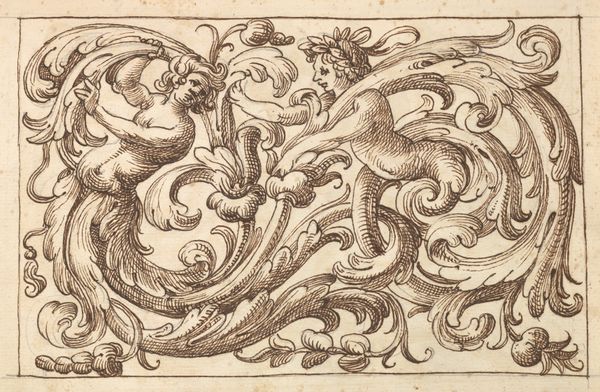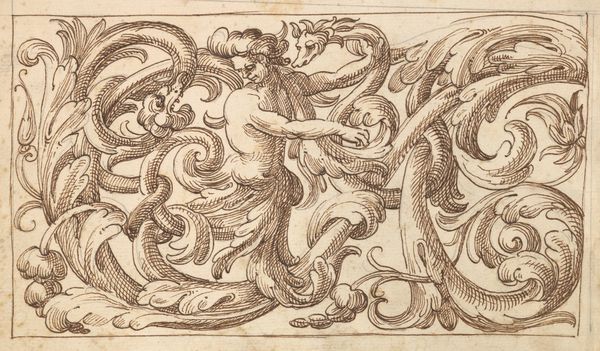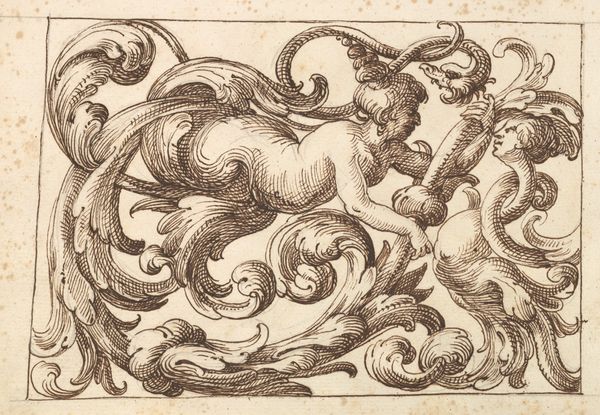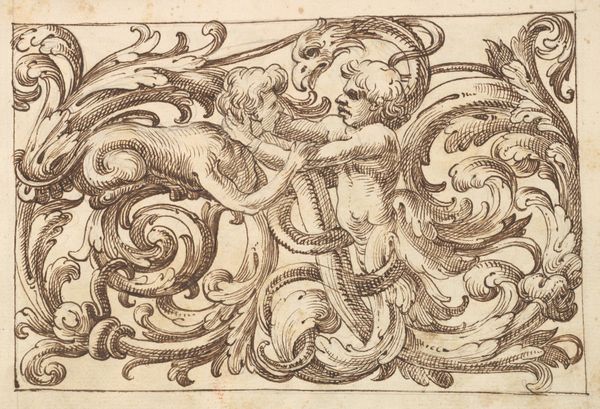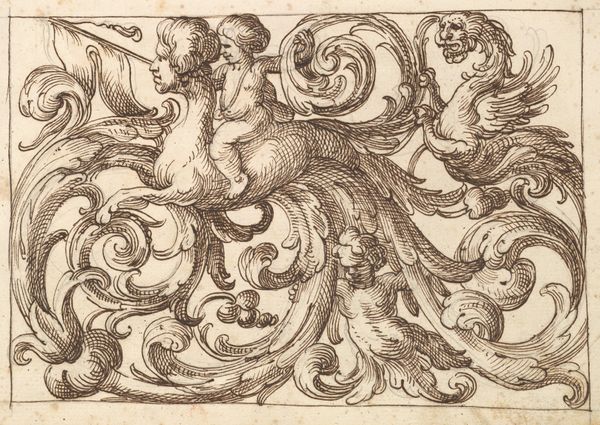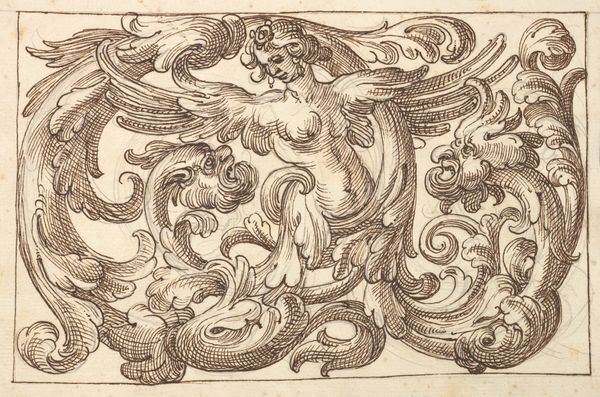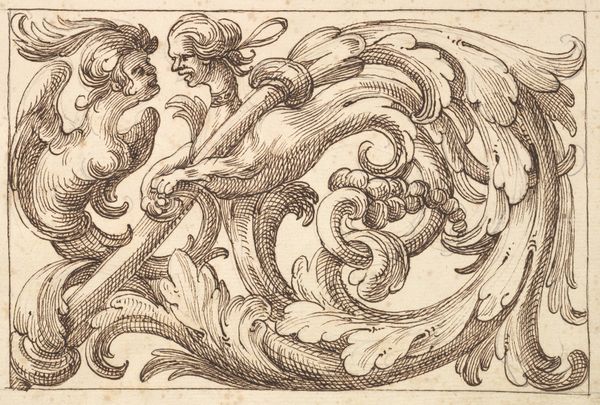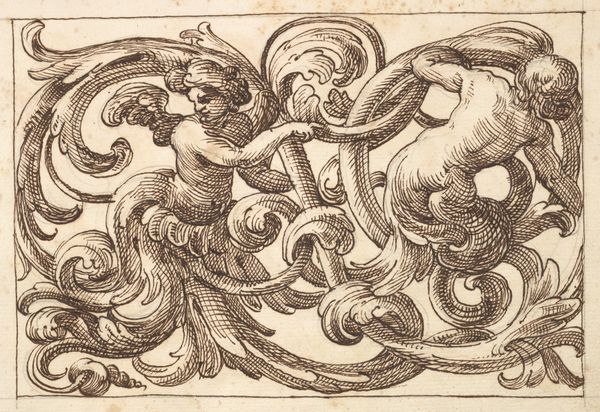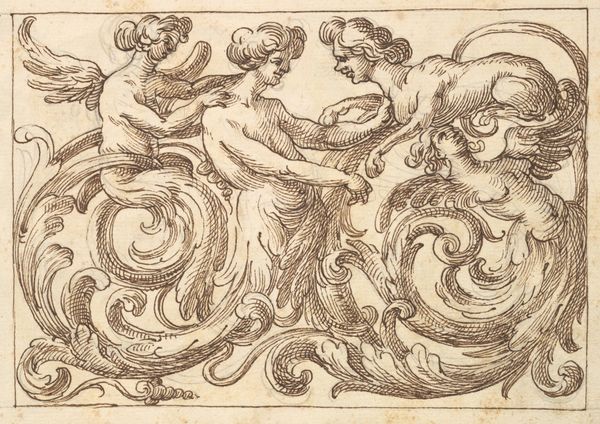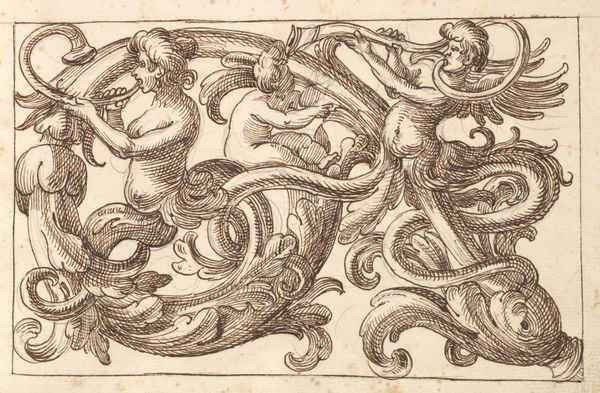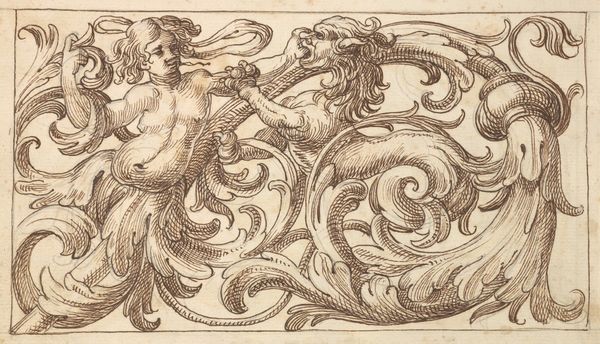
Horizontal Panel Design with Two Young Male Figures Interspersed between Acanthus Rinceaux 1600 - 1650
0:00
0:00
drawing, print, engraving
#
portrait
#
drawing
#
baroque
#
pen drawing
# print
#
pen illustration
#
pen sketch
#
figuration
#
line
#
engraving
Dimensions: Sheet: 7 1/4 x 10 5/16 in. (18.4 x 26.2 cm)
Copyright: Public Domain
Curator: Here we have a pen and brown ink drawing titled "Horizontal Panel Design with Two Young Male Figures Interspersed between Acanthus Rinceaux," dating from 1600 to 1650. It resides here at The Met. Editor: Immediately, I'm struck by the almost dizzying repetition of form. The baroque energy is palpable, but I wonder, is it harmonious, or is it… bordering on chaotic? Curator: Harmonious chaos, perhaps. The eye is led by a deliberate hand, tracing the lines. Note the consistent hatching used to model form and create depth within the acanthus leaves and the figures themselves. It creates a dynamic interplay between light and shadow, even with the absence of color. Editor: The acanthus, of course, is a symbol of enduring life, regeneration. Paired with the figures, there's an evocation of eternal youth or beauty perhaps? Given this piece likely served as a preliminary design, who do you imagine this served? Curator: Considering the medium, a drawing intended as a design, probably for an engraving or other printed work, it seems probable this could have functioned within an artisan’s repertoire of decorative schemes to adapt and refine. We are left only to examine the syntax of line work here, and decode the semiotics within. Editor: But aren't the figures suggestive? These putti-like youths evoke notions of innocence, and joy of life as it entwines with the life affirming, never-ending acanthus blooms. What does it mean that in order for this eternal, vegetative life, these childlike males are having to lift the structure as if they themselves were responsible to grow the whole mass of intertwining structure? Curator: Intriguing analysis. Yet perhaps that supposed symbolism is merely a visual function. Consider that these figural elements establish the symmetry; they act as supporting structural pilons so that the linear harmony, the compositional balance, can be achieved through a structured organization. Editor: Even if it were utilitarian, these characters seem central. Thanks to the composition and symbolist intentions, I look at it differently now! Curator: Yes, by understanding the internal logic of forms and considering historical motifs, hopefully this piece now resonates more profoundly for you too.
Comments
No comments
Be the first to comment and join the conversation on the ultimate creative platform.
